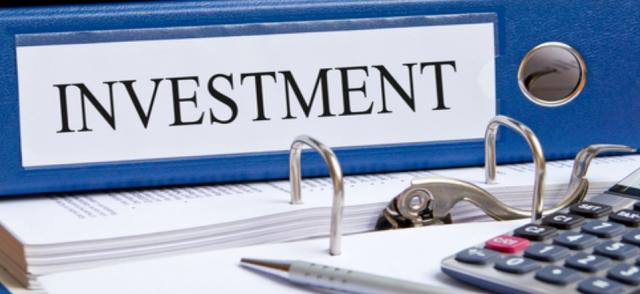
Private equity has always played a significant role in the acquisitions and divestitures (A&D) market, but never has it had more of an impact than it does today.
Much of private equity’s success can be attributed to its uncanny ability to buy when no one else has capital (e.g. the 2009 financial crisis) and the fortitude to buy assets considered out-of-favor in the current marketplace (e.g. conventional gas). Combine that with the fact that private equity currently has some $80 billion of capital dedicated to the upstream exploration and production (E&P) sector, compared with $25 billion eight to 10 years ago, and you can understand why private equity has become such an influence in the market.
To put things in perspective, prior to the global financial crisis in late 2008, private-equity acquisitions typically accounted for about 10% to 15% of total onshore deal value per year. However, in 2009, when public companies and the capital markets were still timid from the financial crisis, private equity found an opportune time to put its abundance of capital to work, buying nearly 40% of all deal value that year.
Private equity hasn’t looked back since. Other than a relatively modest 2010 (about 15% of deal value), private equity has bought roughly 30% to 35% of the acquisition market each of the last few years, culminating with more than $16 billion, or about half of all onshore deal value, thus far in 2014 (through July). It has become the dominant acquirer in the U.S.
Furthermore, private equity is not only acquiring more, but is buying bigger deals, as well. Prior to 2011, private equity had never done a U.S. onshore deal larger than $1 billion. However, since then it has done nine transactions of $1 billion or more in size, four of which were done this year. Aubrey McClendon, with his new venture, American Energy Partners LP, is responsible for two of the recent $1-billion-plus deals and just over $6 billion of acquisitions in 2014—nearly 20% of the entire onshore A&D market.
Other than having $80 billion of firepower available and the reincarnation of McClendon, what has been driving private equity to do bigger deals recently?
Simply put, private equity has seen an opportunity to acquire larger, more conventional positions underexploited by public companies (e.g. recent Midcontinent transactions divested by publics), as well as bigger resource positions that are single-basin focused. With capital markets being so frothy, many private-equity sponsors have seen an opportunity to use these large asset purchases as a vehicle to ultimately take to the public markets in the form of an MLP or C-corp IPO.
Another recent phenomenon, besides bigger deals, is secondary buying, or private equity buying private equity. Historically, it was atypical, and somewhat taboo, to see one private-equity sponsor successfully buy assets sold by another sponsor. However, to become the most dominant buyer in the market, you’ve got to be opportunistic. Hence, today it has become commonplace to see private equity buying private equity. In fact, secondary buying accounts for nearly 20% of all the deal value acquired thus far in 2014.
Sellside
Turning to the sellside, private equity continues to be an opportunistic seller. Since 2013, private equity has accounted for just over $30 billion, or some 41% of onshore deal value sold. Of that $30 billion, over 70% is the sale of oil resource play assets—not a surprise given the premium valuations being achieved for these assets.
Private equity sellside volumes would have been significantly higher, too, had it not been for the incredibly heated IPO market. Private equity has taken full advantage of the frothiness in the public markets and captured significant arbitrage over the private A&D market, taking public 10 portfolio companies valued at more than $40 billion.
In summary, with $80 billion of capital from more than 40 sponsors backing more than 275 management teams, private equity has the financial capacity to capitalize on a number of significant opportunities made available by the most prolific A&D environment in history. Furthermore, private equity continues to capture strong valuations when selling due to its agility and nimbleness to react to the current A&D environment and identify the most lucrative exit.
—Craig Lande, of RBC Richardson Barr, can be reached at craig.lande@rbccm.com and 713-585-3300.
Recommended Reading
Dividends Declared Week of Jan. 13
2025-01-17 - With 2024 year-end earnings season underway, here is a compilation of dividends declared from select upstream, midstream and downstream companies.
Artificial Lift Firm Flowco’s Stock Surges 23% in First-Day Trading
2025-01-17 - Shares for artificial lift specialist Flowco Holdings spiked 23% in their first day of trading. Flowco CEO Joe Bob Edwards told Hart Energy that the durability of artificial lift and production optimization stands out in the OFS space.
Velocity Management Invests in Pipeline Builder M Wright Services
2025-01-16 - Velocity Management Advisors has made a minority investment in M Wright Services and three of Velocity’s partners will join the construction firm’s board.
Pearl Again Backs Williston E&P Eagle Mountain Energy Partners
2025-01-16 - Private equity firm Pearl Energy Partners will back Eagle Mountain Energy Partners II, which last year exited its Williston Basin assets in a nearly $300 million deal with TXO Partners.
BP Cuts Over 5% of Workforce to Reduce Costs
2025-01-16 - BP will cut over 5% of its global workforce as part of efforts to reduce costs and rebuild investor confidence.
Comments
Add new comment
This conversation is moderated according to Hart Energy community rules. Please read the rules before joining the discussion. If you’re experiencing any technical problems, please contact our customer care team.




